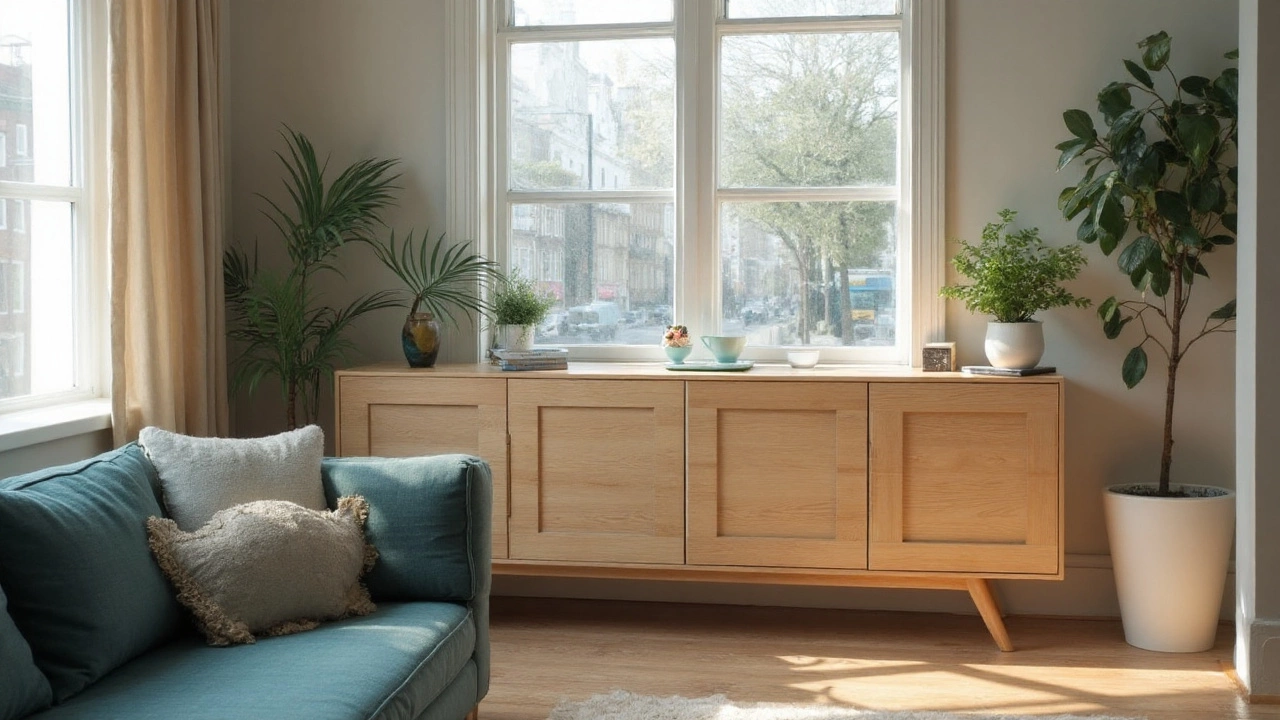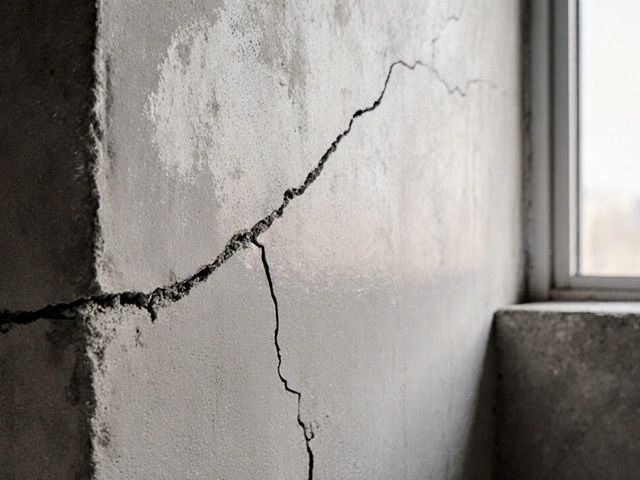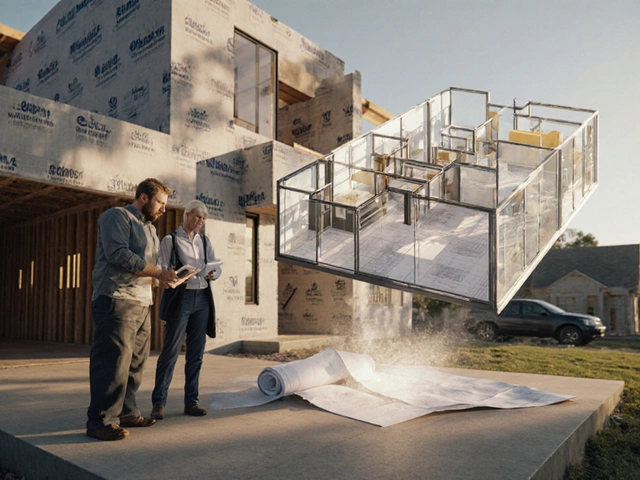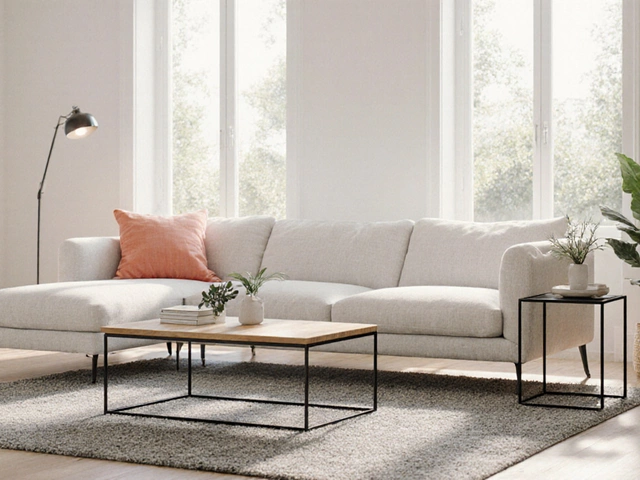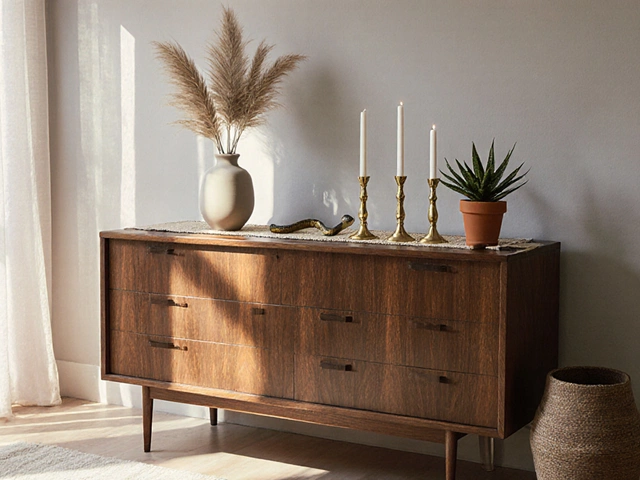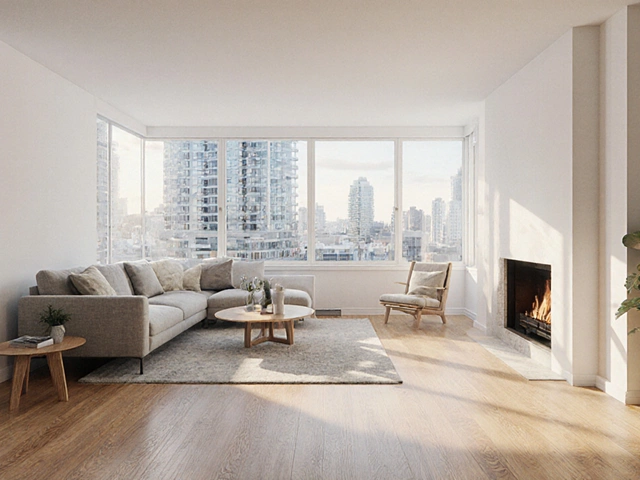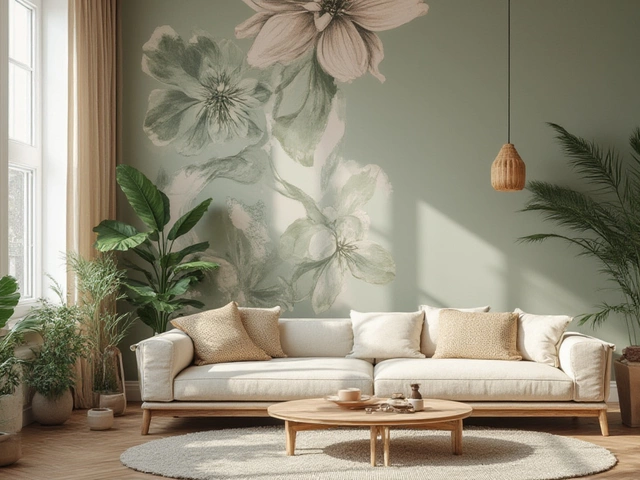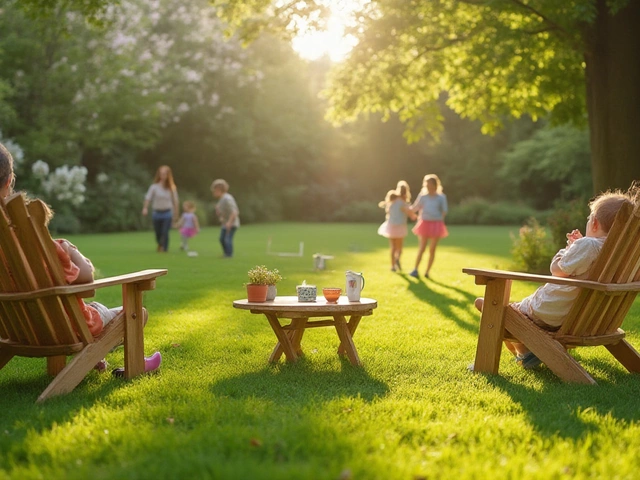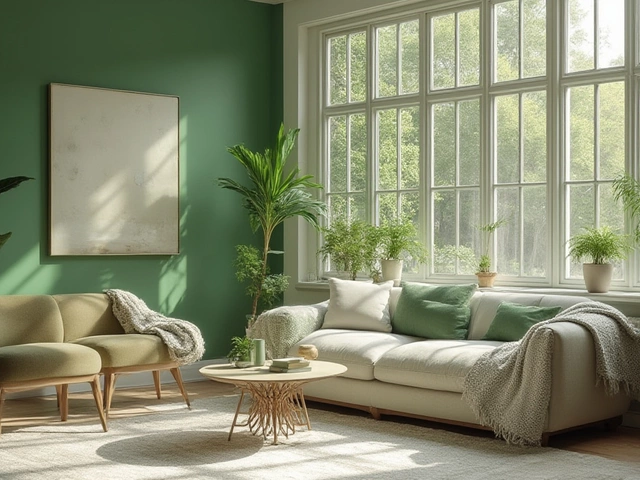Sideboard Style Finder Quiz
1. Which room will host the sideboard?
2. Preferred design style?
3. Available depth (from wall to front)?
4. What is your budget?
Quick Take
- Sideboards remain a versatile storage piece, especially in open‑plan homes.
- Modern styles blend classic wood with sustainable or mixed materials.
- They compete with credenzas, buffets, hutches, and console tables-choose based on function.
- Key buying factors: size, finish, modularity, and budget.
- Future versions may include built‑in charging stations and modular inserts.
Sideboard is a low, rectangular piece of storage furniture traditionally used in dining rooms to hold dishes, linens, and servingware. It typically features a flat top, cabinets or drawers underneath, and a sturdy base made from wood, metal, or engineered materials. Modern sideboards keep the basic form but adapt to contemporary aesthetics and multifunctional needs.
While the term “sideboard” pops up in antique catalogs, the question today is whether homeowners still reach for this piece when furnishing a modern space. The answer is a nuanced yes: sideboards have evolved, but they face strong competition from related storage units. Below we unpack the history, current trends, and practical guidance so you can decide if a sideboard deserves a spot in your home.
From Buffets to Credenzas: A Brief History
The sideboard’s ancestor is the buffet, a 17th‑century French cabinet used to display fine china. As dining customs shifted, the term “sideboard” emerged in the 19th century, emphasizing its placement along the side of a dining table. By the mid‑20th century, the credenza entered the market, offering a slimmer profile for narrower hallways.
These pieces shared a core purpose-organized storage-but differed in ornamentation and regional naming. The evolution continued as open‑plan living became popular, prompting designers to reimagine sideboards as multi‑room furniture rather than strictly dining‑room accessories.
Design Trends Shaping Today’s Sideboards
Modern interior design leans toward clean lines, mixed textures, and sustainability. Sideboards reflect three dominant aesthetics:
- Mid‑century modern: Tapered legs, warm teak, and slim hardware. The style pairs well with minimalist decor.
- Farmhouse: Distressed wood, barn‑door pulls, and a generous upper shelf for decorative plates.
- Contemporary minimalism: High‑gloss lacquer, metal accents, and hidden handles for a seamless look.
Designers also experiment with hybrid forms-adding open shelving, glass doors, or integrated lighting. The result is a piece that can serve as a bar, media console, or entryway organizer.
Materials Matter: From Solid Wood to Sustainable Options
Traditional sideboards were solid oak or walnut, prized for durability. Today, sustainable materials dominate the market:
- Reclaimed pine or reclaimed barn wood-keeps the farmhouse vibe while reducing waste.
- Engineered bamboo-harder than many hardwoods and fast‑growing.
- Metal frames with powder‑coat finishes-lightweight and rust‑proof.
- Mixed media (e.g., wood+metal) for an industrial look.
Consumers increasingly ask for Environmental Product Declarations, so manufacturers label FSC‑certified wood or carbon‑neutral production processes.
How a Sideboard Stacks Up Against Similar Storage Pieces
| Attribute | Sideboard | Credenza | Buffet | Hutch | Console Table |
|---|---|---|---|---|---|
| Typical Height | 30‑36in | 30‑38in | 30‑34in | 70‑80in (combined) | 28‑34in |
| Depth | 16‑20in | 20‑24in | 16‑18in | 16‑20in (upper) | 10‑12in |
| Storage Type | Cabinets+drawers | Cabinets+drawers (often taller) | Cabinets only | Cabinets+shelves (tall) | Open shelf or surface only |
| Best Use | Dining room, living room, hallway | Office, media room | Traditional dining rooms | Display, bar area | Entryway, behind sofa |
| Style Flexibility | High | Medium | Low‑Medium | Medium‑High | High |
When deciding, match the piece to your room’s dimensions and the type of storage you need. If you want a long surface for serving drinks while still having hidden drawers, a sideboard usually wins. For a slimmer profile that fits a narrow hallway, a credenza or console table may be smarter.
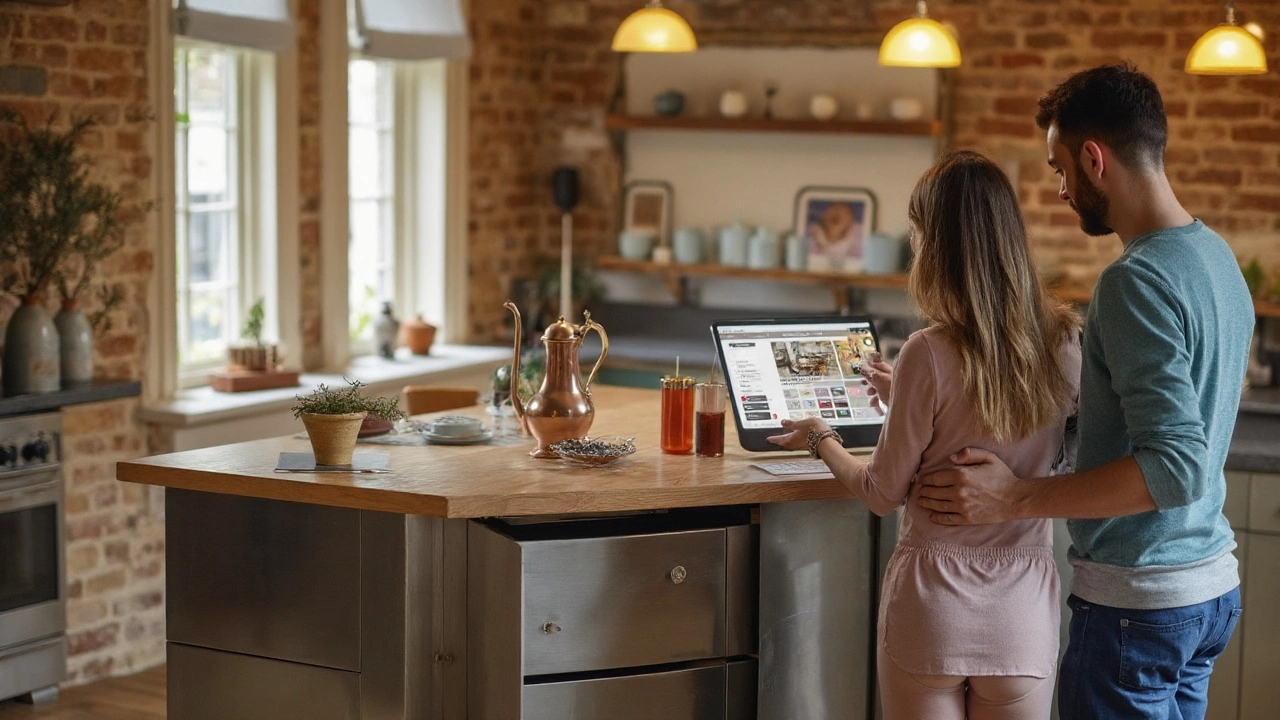
Real‑World Scenarios: Where People Are Using Sideboards Today
1️⃣ Dining Room: Classic placement-use the top for a buffet during parties, store plates below.
2️⃣ Living Room: Serve as a media console, hide gaming consoles, and display books on the surface.
3️⃣ Hallway: Thin sideboard with vertical storage keeps coats and shoes off the floor.
4️⃣ Home Office: Store files and office supplies, use the top as extra desk space.
5️⃣ Outdoor Covered Patios: Weather‑treated sideboards become stylish bar stations.
Buying Considerations: Size, Style, and Budget
- Measure the space. Leave at least 12in of clearance on each side for easy movement.
- Choose a depth that matches the room’s scale. Small apartments benefit from 16‑in depth.
- Decide on a finish-natural wood grain for warmth, matte lacquer for sleekness.
- Check drawer slide quality. Soft‑close mechanisms add longevity.
- Set a budget. Entry‑level models from flat‑pack retailers start around $200, while custom‑built pieces can exceed $2,500.
Don’t forget to factor in delivery costs and assembly time if you opt for a DIY kit.
Styling Tips: Making the Most of Your Sideboard
- Pair with a rug that anchors the piece; a neutral jute rug works in both farmhouse and modern rooms.
- Use the top for a balanced display: add a low vase, a stack of books, and a small sculpture.
- Mix open and closed storage-store everyday items in drawers, showcase decorative plates on open shelves.
- Integrate lighting: a slim LED strip inside a cabinet adds ambience for evening gatherings.
- Seasonal swap: during holidays replace decorative items with festive pieces without moving the furniture.
Future Outlook: Modular and Tech‑Enabled Sideboards
Designers are already prototyping sideboards with modular inserts-think removable wine racks, pull‑out charging stations, and even built‑in Bluetooth speakers. As smart homes grow, a sideboard could become a central hub, housing routers, power strips, and IoT controllers hidden behind sleek panels.
These innovations keep the sideboard relevant, especially for younger buyers who value both aesthetics and functionality.
Bottom Line
Yes, people still use sideboards, but they’re no longer confined to the formal dining room. Modern materials, flexible designs, and smart‑home integrations have broadened their appeal. By weighing size, style, and how you intend to use the piece, you can decide whether a sideboard-or a related storage unit-fits your home today.
Frequently Asked Questions
What is the difference between a sideboard and a buffet?
A buffet is generally a larger, more formal piece used mainly for displaying and serving food, while a sideboard offers a lower profile and often includes drawers for hidden storage, making it more versatile across rooms.
Are sideboards suitable for small apartments?
Yes, especially narrow sideboards with a depth of 16‑18in. They provide extra surface area without overwhelming a compact floor plan.
What material is most durable for a sideboard?
Solid hardwood like oak or walnut offers lasting durability, but engineered bamboo and high‑grade metal frames also perform well and are more eco‑friendly.
Can I use a sideboard as a TV stand?
A sturdy sideboard with a weight capacity of at least 100lb can safely hold most flat‑screen TVs, but check the top’s clearance for ventilation.
What are the key trends for sideboards in 2025?
2025 sees a blend of sustainable woods, modular inserts (wine racks, charging stations), and minimal hardware. Mixed‑material designs that combine wood with matte metal are also popular.
How do I maintain a reclaimed‑wood sideboard?
Regular dusting, occasional polishing with a natural oil, and keeping it out of direct sunlight will preserve the patina and prevent cracking.
